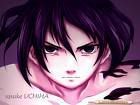 Iron Man is a fictional character, a superhero that appears in comic books published by Marvel Comics. The character first appeared in Tales of Suspense #39 (March 1963), and was created by writer-editor Stan Lee, scripter Larry Lieber, and artists Don Heck and Jack Kirby.
Iron Man is a fictional character, a superhero that appears in comic books published by Marvel Comics. The character first appeared in Tales of Suspense #39 (March 1963), and was created by writer-editor Stan Lee, scripter Larry Lieber, and artists Don Heck and Jack Kirby.
Born Anthony Edward "Tony" Stark, he is an industrialist playboy and genius inventor who suffers a severe heart injury during a kidnapping and is forced to build a destructive weapon. He instead creates a powered suit of armor to save his life and escape captivity. He later decides to use the suit to protect the world as Iron Man.[1] Through his multinational corporation, Stark Industries, Tony created military weapons and his own metal suit is laden with technological devices that enable him to fight crime. Initially, Iron Man was a vehicle for Stan Lee to explore Cold War themes, particularly the role of American technology and business in the fight against communism. Subsequent re-imaginings of Iron Man have gradually removed the Cold War themes, replacing them with more contemporary concerns such as corporate crime and terrorism.
Throughout most of the comic's history, Iron Man has been a member of the superhero team the Avengers and has been featured in several incarnations of his own various comic book series. The character has been adapted for several animated TV shows and films, as well as for the live action films Iron Man, Iron Man II and a brief appearance in The Incredible Hulk where he is played by Robert Downey, Jr.Diadaptasi dari karya legendaris Marvel, Pahlawan Super Iron Man
Tony Stark (Robert Downey Jr.) dikisahkan sebagi seorang industrialis biliuner dan penemu genius yang diculik dan dipaksa untuk membuat senjata mematikan. Pada masa penculikan tersebut, menggunakan kecerdasan, Tony membuat baju baja berteknologi canggih dan berhasil melarikan diri
Saat ia mengungkap sebuah kejahatan dengan implikasi global, menggunakan baju baja dan kekuatannya untuk melindungi dunia sebagai Manusia Besi / Iron Man
Publication history
Iron Man's premiere was a collaboration among editor and story-plotter Stan Lee, scripter Larry Lieber, story-artist Don Heck, and cover-artist and character-designer Jack Kirby. In 1963, Lee had been toying with the idea of a businessman superhero.[2] He wanted to create the "quintessential capitalist", a character that would go against the spirit of the times and Marvel's readership.[3] Lee said, "I think I gave myself a dare. It was the height of the Cold War. The readers, the young readers, if there was one thing they hated, it was war, it was the military ... So I got a hero who represented that to the hundredth degree. He was a weapons manufacturer, he was providing weapons for the Army, he was rich, he was an industrialist ... I thought it would be fun to take the kind of character that nobody would like, none of our readers would like, and shove him down their throats and make them like him ... And he became very popular."[4] He set out to make the new character a wealthy, glamorous ladies' man, but one with a secret that would plague and torment him as well.[5] Writer Gerry Conway said, "Here you have this character, who on the outside is invulnerable, I mean, just can't be touched, but inside is a wounded figure. Stan made it very much an in-your-face wound, you know, his heart was broken, you know, literally broken. But there's a metaphor going on there. And that's, I think, what made that character interesting".[4] Lee based this playboy's looks and personality on Howard Hughes,[6] explaining, "Howard Hughes was one of the most colorful men of our time. He was an inventor, an adventurer, a multi-billionaire, a ladies' man and finally a nutcase".[7] "Without being crazy, he was Howard Hughes," Lee said.[4]
While Lee intended to write the story himself, he eventually handed the premier issue over to Lieber, who fleshed out the story.[5] The art was split between Kirby and Heck. "He designed the costume," Heck said of Kirby, "because he was doing the cover. The covers were always done first. But I created the look of the characters, like Tony Stark and his secretary Pepper Potts."[6][8]
Iron Man first appeared in 13- to 18-page stories in Tales of Suspense, which featured anthology science fiction and supernatural stories. The character's original costume was a bulky gray armored suit, replaced by a golden version in the second story (issue #40, April 1963). It was redesigned as sleeker, red-and-golden armor in issue #48 (Dec. 1963); that issue's interior art is by Steve Ditko and its cover by Kirby. In his premiere, Iron Man was an anti-communist hero, defeating various Vietnamese agents. Lee later regretted this early focus.[2][9] Throughout the character’s comic book series, technological advancement and national defense were constant themes for Iron Man, but later issues developed Stark into a more complex and vulnerable character as they depicted his battle with alcoholism (Demon in a Bottle) and other personal difficulties.
Tales of Suspense #48 (Dec. 1963), the debut of Iron Man's red-and-gold armor. Cover art by Jack Kirby & Sol Brodsky.
From issue #59 (Nov. 1964) to its final issue #99 (March 1968), the anthological science-fiction backup stories in Tales of Suspense were replaced by a feature starring the superhero Captain America. After issue #99 (March 1968), the book's title was changed to Captain America. Iron Man stories moved to the title Iron Man and Sub-Mariner in April 1968, before the "Golden Avenger"[10] made his solo debut with The Invincible Iron Man #1 (May 1968). Lee said that "of all the comic books we published at Marvel, we got more fan mail for Iron Man from women, from females, than any other title ... We didn't get much fan mail from girls, but whenever we did, the letter was usually addressed to Iron Man."[4]
Writers have updated the war and locale in which Stark is injured. In the original 1963 story, it was the Vietnam War. In the 1990s, it was updated to be the first Gulf War,[11] and later updated again to be the war in Afghanistan. However, Stark's time with the Asian Nobel Prize-winning scientist Ho Yinsen is consistent through nearly all incarnations of the Iron Man origin, depicting Stark and Yinsen building the original armor together. One exception is the direct-to-DVD animated feature film The Invincible Iron Man, in which the armor Stark uses to escape his captors is not the first Iron Man suit.
[edit] Thematic origins
Like other Stan Lee creations in the early years of Marvel Comics, such as The Fantastic Four and The Incredible Hulk, the Iron Man story, in its original manifestations, was an exploration of Cold War themes. Where The Fantastic Four and The Incredible Hulk focused on the American domestic and government/bureaucratic responses to Cold War pressures, respectively, Iron Man looked to industry's role in the struggle against communism. Tony Stark's real-life model Howard Hughes was an archetype of American individualism as well as a significant defense contractor who helped develop new weapons technologies.[12]
Tony Stark/Iron Man's reliance on technology and intelligence, rather than the chance transformations of many other superheroes, reinforced the American faith in technological solutions to the military, political and ideological problems of the Cold War. Stark is an idealized portrait of the American inventor. By the 1960s, military weapons development was firmly in the realm of Big Science, with little role for the lone inventor. Issues of autonomy and government intervention in research and questions of loyalty — which real-life American physicists and engineers were also facing, if less dramatically — are prominent themes in early Iron Man storylines.[12]
According to historian Robert Genter, Stark is emasculated by his loss of autonomy as an inventor — a blow to his manhood symbolized by his chest wound — and "Iron Man centers on Stark's inability to reconcile with this wound to his masculinity."[12] Stan Lee used the playboy side of Stark to restore the character's sense of masculinity. Stark conquers women — either romantically or physically, and with female supervillains frequently both — and, writes Genter, "follows the lead of other cultural and literary figures such as Ian Fleming, Mickey Spillane, and Norman Mailer who made unregulated sexuality a form of authenticity
FROM WIKIPEDIA
Sabtu, 09 Mei 2009
Iron Man
Label:
Komik film Animasi
Langganan:
Posting Komentar (Atom)
Link Teman
- adhelina
- ADY EXPRESSION TERITORRY
- ady-inbox
- ajie gumelar
- all u know
- area usaha
- asalcom pasang iklan gratis tanpa daftar
- bit gallery Bebas Download
- blog mungil
- Blogger dari Purwodadi
- blogger indramayu
- fack and farcle
- faniza widya
- feumj
- iklan gratis
- iklan gratisan.cc
- iklan tehobeng
- iklan top tea
- iklan top.cc
- indo spiritual
- indobat
- internet incomeku
- Internet Marketing Indonesia
- irmagi.blog
- jacbferd16
- jacbferd88
- jamalbaharuns's blog
- kebo ello
- kuatza
- lerry060183 Weblogs
- mahawiraku
- norjik
- obbie afri
- pontianak asyik
- rakan blogger
- refill pulsa
- remo creativity
- siak bunga raya
- speech your m1nd
- sunatullah
- takaza
- tempatku berbagi.
- The Story
- tito-kun
- tukarlink1
- tukarlink1.b
- tukarlink11.b
- tukarlink2
- tukarlink3
- tukarlink4
- tukarlinkaku
- tukarlinks
- tukarlinktop.w
- tukarlinktop1.b
- tukeran link yuk
- tutorial7

































Tidak ada komentar:
Posting Komentar